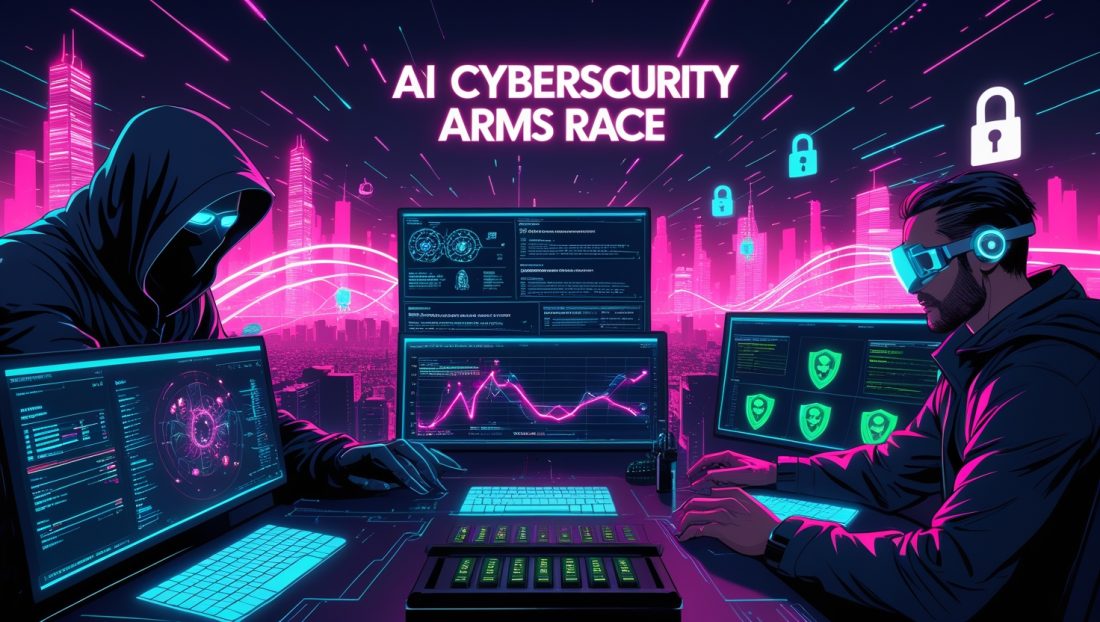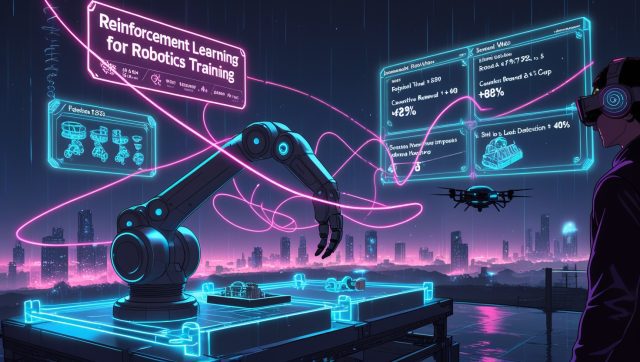A Digital Battlefield Where Every Second Counts
What happens when the tools designed to protect us turn against us? In late 2023, a multinational bank narrowly avoided catastrophe when its AI-powered surveillance system detected an anomaly: a seemingly legitimate $20 million transfer request, initiated by a deepfake clone of the CFO. The AI flagged subtle inconsistencies in vocal cadence, a feat impossible for human auditors. Yet, it was the human team that traced the attack to a state-sponsored group leveraging generative adversarial networks (GANs).
This incident underscores the AI cybersecurity arms race—a clash where attackers and defenders deploy machine learning at unprecedented speed. By 2025, Gartner predicts that 60% of enterprises will face AI-augmented attacks, doubling the complexity of incident response. But as algorithms evolve, one truth remains: technology alone cannot win this war.
Note: 2025 deepfake attack examples illustrate the AI cybersecurity arms race, highlighting the need for human oversight and ethical AI governance.
The Anatomy of the AI Cybersecurity Arms Race
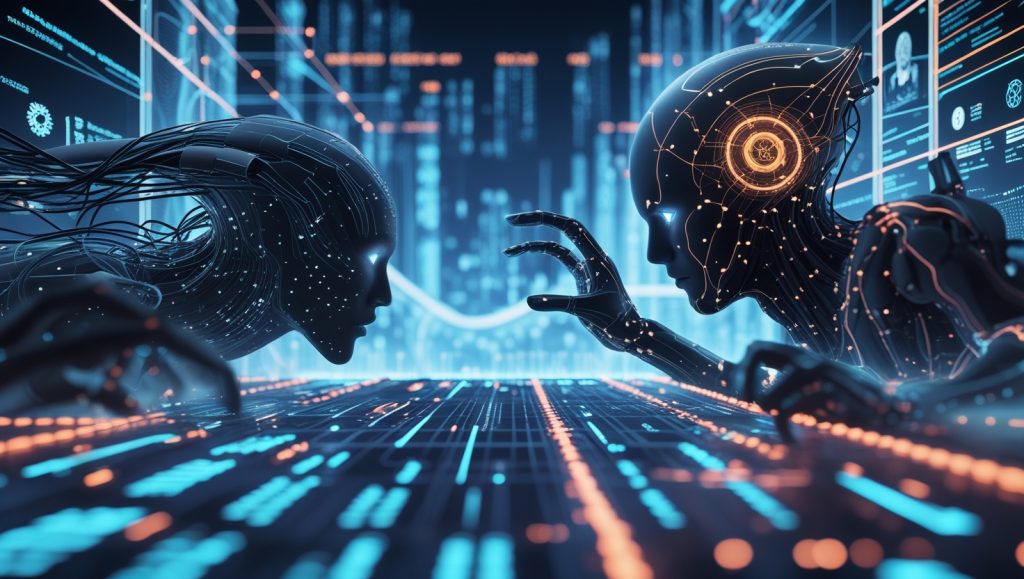
1. Offensive AI: How Attackers Weaponize Machine Learning
Cybercriminals no longer need advanced coding skills. Platforms like WormGPT (a malicious LLM) enable novices to craft convincing phishing emails, while tools like FraudGPT generate polymorphic malware that evades traditional defenses.
Real-World Example: In 2023, a ransomware group used AI to analyze leaked employee data from a Fortune 500 company. They generated personalized phishing messages mimicking internal HR communications, resulting in a $4.3 million cryptojacking scheme.
Emerging Threats:
- Adversarial AI: Manipulating training data to “blind” defense models.
- AI-Driven Social Engineering: Deepfake audio scams increased by 300% in 2024, targeting executives during mergers.
- Autonomous Botnets: Self-learning botnets like Mirai 2.0 adaptively exploit IoT vulnerabilities.
AI has democratized cybercrime. A teenager with a laptop can now launch attacks that rival nation-state actors, notes Katie Nickels, Director of Intelligence at Red Canary.
Why Attackers Are Winning the AI Cybersecurity Arms Race
The AI cybersecurity arms race favors attackers because they operate without ethical constraints. Malicious actors exploit open-source AI models to create adaptive malware that mutates faster than signature-based defenses can track. For instance, the rise of deepfake technology, explored in depth in our article on why humanoid robots creep us out, shows how AI-generated personas can deceive even seasoned professionals. This asymmetry—attackers innovate freely while defenders face regulatory and ethical hurdles—tilts the battlefield. In 2024, AI-driven phishing campaigns cost businesses $12.5 billion globally, per the FBI’s Internet Crime Report. The bad actors’ fearless adoption of AI tools is a wake-up call for enterprises lagging in the AI cybersecurity arms race.
How Generative AI Fuels Sophisticated Exploits
Generative AI, like the models powering FraudGPT, creates hyper-realistic attack vectors. In the AI cybersecurity arms race, these tools craft emails that mimic a CEO’s writing style or generate fake invoices with pixel-perfect logos. Our analysis of AI in judicial decisions highlights how AI’s pattern recognition can be twisted for malicious precision, such as forging legal documents. The downside? Defenders must train their AI to spot these fakes, but the training data itself is often poisoned by adversarial inputs. This cat-and-mouse game defines the AI cybersecurity arms race, where innovation is a double-edged sword.
2. Defensive AI: The Rise of Autonomous Guardians
Defenders are countering with AI systems capable of real-time threat hunting. For instance:
- Darktrace’s Antigena: Neutralizes ransomware by autonomously isolating infected devices.
- CrowdStrike’s Charlotte AI: Predicts attack paths using 1 trillion daily security events.
Case Study: When the 2024 Paris Olympics faced a barrage of DDoS attacks, AI algorithms rerouted traffic through decentralized nodes, maintaining uptime despite 5.2 Tbps assaults.
Limitations:
- False Positives: Overload analysts with trivial alerts (e.g., mistyped passwords flagged as breaches).
- Ethical Dilemmas: Should an AI autonomously shut down critical infrastructure to contain a threat?
Why Defensive AI Struggles in the AI Cybersecurity Arms Race
The AI cybersecurity arms race exposes defensive AI’s Achilles’ heel: overreliance on automation. Tools like Darktrace excel at spotting anomalies, but they often flood analysts with false positives, wasting critical time. Our article on why AI in robotics is failing parallels this issue, noting that AI’s lack of contextual reasoning hampers its effectiveness in dynamic environments. In 2025, the AI cybersecurity arms race demands systems that learn from human feedback to refine their accuracy. Without this, defenders risk drowning in alerts while attackers slip through.
The Promise of Explainable AI in Cybersecurity
Explainable AI (XAI) is a game-changer in the AI cybersecurity arms race. By making AI decisions transparent, XAI helps analysts understand why a threat was flagged. Our exploration of why explainable AI is the future shows how XAI builds trust in high-stakes scenarios. For example, when CrowdStrike’s Charlotte AI predicts an attack path, XAI can reveal the logic behind it, enabling faster human validation. This hybrid approach is critical to staying competitive in the AI cybersecurity arms race, where clarity separates success from chaos.
The Human Factor: Bridging the Gap Between Code and Conscience
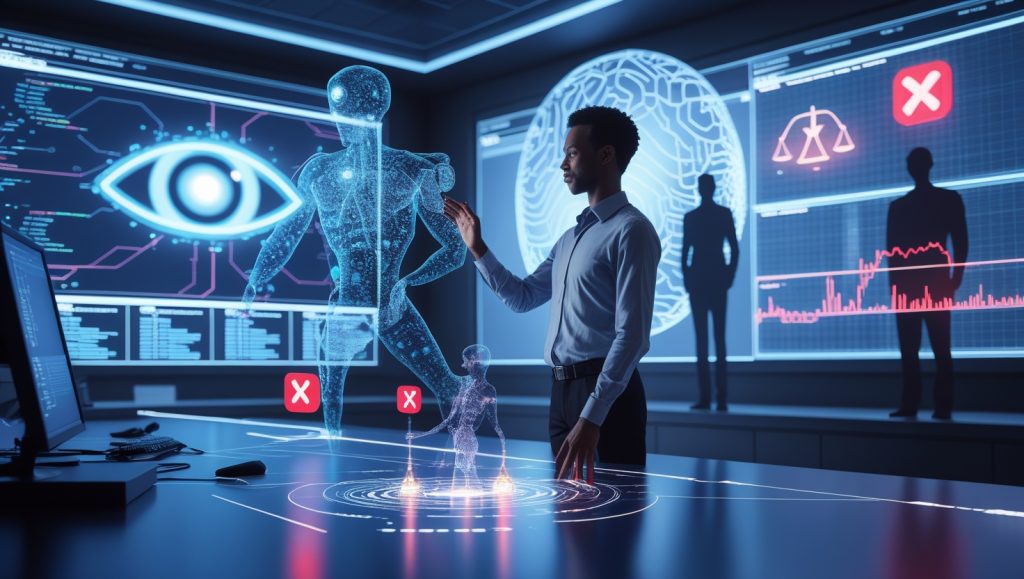
Despite AI’s prowess, the 2024 IBM Cost of a Data Breach Report revealed that organizations relying solely on automation suffered 23% higher breach costs. Why?
Critical Weaknesses of AI-Only Strategies:
- Context Blindness: AI can’t discern intent. A surge in login attempts might be a brute-force attack—or a viral marketing campaign.
- Creativity Deficit: Human hackers innovate; AI replicates.
- Ethical Boundaries: Only humans navigate legal gray areas (e.g., retaliatory hacking).
A Cautionary Tale: In 2023, an AI system at a European hospital falsely labeled chemotherapy dosages as “malicious,” delaying treatments. Human oversight corrected the error, but the incident exposed life-or-death stakes.
AI is a tireless sentinel, but it lacks the moral compass to make judgment calls, argues Bruce Schneier, Cybersecurity Expert at Harvard Kennedy School.
Why Humans Are the Linchpin in the AI Cybersecurity Arms Race
In the AI cybersecurity arms race, human ingenuity is the ultimate differentiator. AI can process terabytes of data, but only humans can interpret nuanced threats—like distinguishing a marketing spike from a coordinated attack. Our discussion of why AI ethics could save or sink us emphasizes that ethical decision-making is uniquely human. In 2025, the AI cybersecurity arms race hinges on training teams to work symbiotically with AI, leveraging tools like those in AI-driven cybersecurity threat detection to amplify human intuition.
The Cost of Ignoring Human Oversight
Ignoring humans in the AI cybersecurity arms race is a recipe for disaster. The hospital incident proves that unchecked AI can cause harm, even with good intentions. Our article on why robot surgeons can’t replace humans yet draws a similar conclusion: automation excels in precision but falters in judgment. Organizations that skimp on human oversight in the AI cybersecurity arms race face not just financial losses but reputational ruin. Investing in human-AI collaboration is non-negotiable.
2025 and Beyond: Strategies for a Hybrid Defense
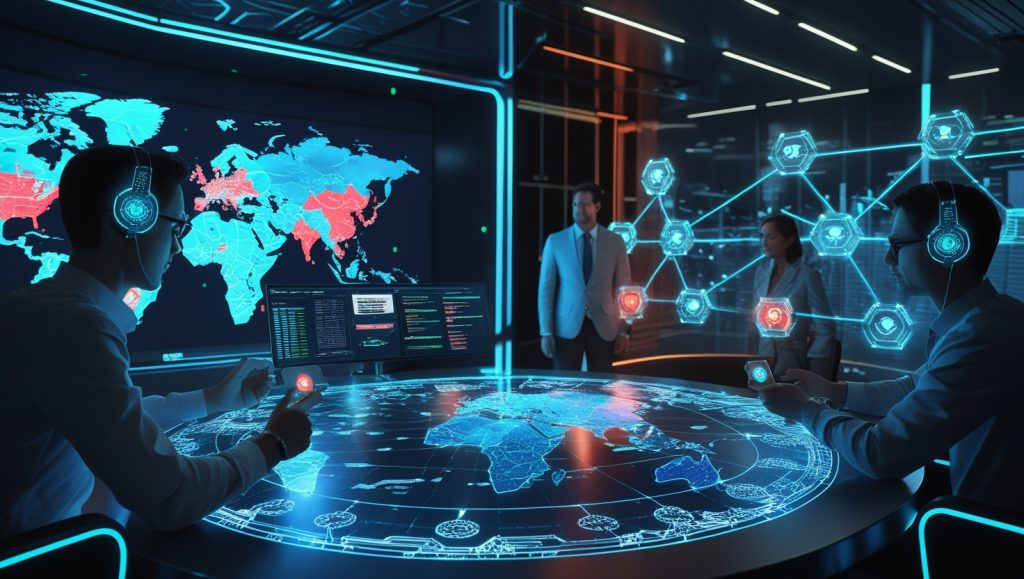
1. Upskill Teams for Symbiotic Human-AI Workflows
- Micro-Credentials: Platforms like Coursera and SANS Institute offer AI-cyber fusion certifications.
- War Games: Simulations like MITRE’s Engenuity pit red/blue teams against AI adversaries.
2. Govern AI with Zero-Trust Principles
- Explainable AI (XAI): Mandate transparency in defense algorithms to audit decisions.
- Federated Learning: Train models on decentralized data to protect privacy.
Regulatory Spotlight: The EU AI Act (2024) imposes strict risk assessments for cybersecurity tools, penalizing opaque “black box” systems.
3. Foster Global Collaboration
- Threat Intel Sharing: Initiatives like CISA’s Joint Cyber Defense Collaborative pool data from 150+ firms to preempt cross-border attacks, driving collective resilience in the AI cybersecurity arms race.
- Open-Source Defense: Projects like Elastic’s OpenSOC let SMEs access enterprise-grade AI tools.
Why Collaboration Is the Future of the AI Cybersecurity Arms Race
Global collaboration is the secret weapon in the AI cybersecurity arms race. Initiatives like CISA’s JCDC prove that shared intelligence can outpace lone actors. Our article on why robotics in recycling is reshaping global markets highlights how cross-industry collaboration drives innovation—a lesson cybersecurity must heed. By 2025, the AI cybersecurity arms race will reward those who pool resources, from open-source tools to multinational task forces.
FAQ: Addressing the Human Concerns Behind the Headlines
Will AI replace cybersecurity jobs?
No—it transforms them. Roles like AI Security Architect and Ethical Hacking Trainer are surging, with LinkedIn reporting a 72% increase in AI-cyber hybrid postings.
Can small businesses afford AI defense?
Yes. Cloud-based solutions like Microsoft Security Copilot start at $4/user/month, democratizing access.
How do we prevent AI from being weaponized?
Through offensive AI ethics boards and sandboxed R&D environments, as proposed by the 2025 UN Cybersecurity Resolution.
The Race Without a Finish Line
The AI cybersecurity arms race isn’t apocalyptic—it’s a call to evolve. As algorithms grow smarter, so must our strategies: blending machine speed with human wisdom, innovation with ethics, and competition with collaboration.
Your Next Move:
- Subscribe to our newsletter for monthly threat intelligence reports.
